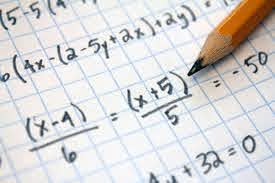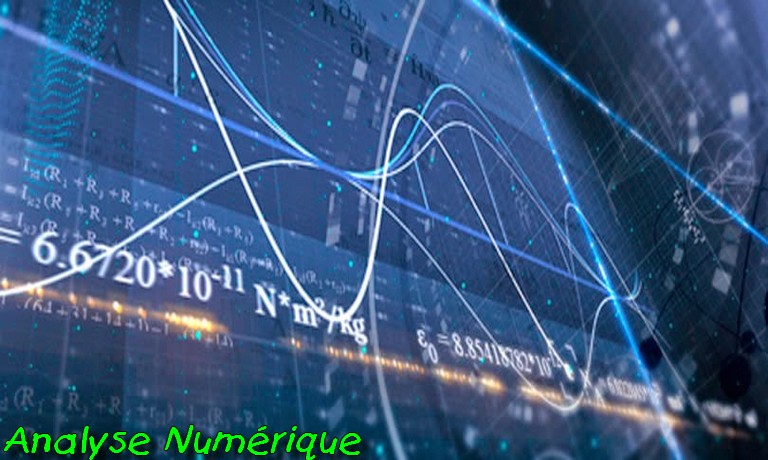L3 – Material Sciences
Quantum Mechanics II
Objectives of the Course:
Deepen the fundamental concepts and become familiar with the mathematical tools of quantum mechanics. Enhance one's knowledge of the basic concepts of quantum mechanics and apply them to concrete quantum systems. Gain an introduction to quantum mechanics calculation methods.
Recommended Prerequisite Knowledge: Familiarity with concepts covered in Quantum Mechanics I.
Course Content:
Chapter 1: Angular Momentum and Spin
- Angular momentum J.
- Commutation relations.
- Angular momentum L and spherical harmonics.
- Spin angular momentum S.
- Stern-Gerlach experiment.
Chapter 2: Addition of Angular Momenta
- Addition of 2 angular momenta.
- Clebsch-Gordan coefficients.
- 3j symbols, Wigner-Eckart theorem, 6j symbols.
Chapter 3: Motion of a Particle in a Central Field
- Eigenvalue problems.
- Free particle.
- Particle in a box.
- Three-dimensional harmonic oscillator (isotropic and anisotropic).
- Free particle in spherical coordinates.
- Solving the Schrödinger equation for a Coulomb potential.
- Hydrogen atom and atomic orbitals.
Chapter 4: Overview of Approximation Methods
فيزياء المواد
ميكانيكا الكم 2
الأهداف
تعزيز وتعميق المفاهيم الأساسية والتعرف على الأدوات الرياضية لميكانيكا الكم. زيادة المعرفة بالمفاهيم الأساسية لميكانيكا الكم وتطبيقها على أنظمة كمية محددة. الحصول على مقدمة في طرق حساب ميكانيكا الكم.
المعرفة المسبقة الموصى بها: إلمام بالمفاهيم المشمولة في ميكانيكا الكم الجزء الأول.
محتوى الدورة
: الفصل 1: الزخم الزاوي والدوران
• الزخم الزاوي J.
• علاقات التبادل.
• الزخم الزاوي L والهارمونيات الكروية.
• الزخم الزاوي للدوران S.
• تجربة Stern-Gerlach.
الفصل 2: جمع الزخم الزاوي
• جمع 2 زخم زاوي.
•معاملات كليبش-جوردان.
• رموز 3j، نظرية فيجنر-إيكارت، رموز 6j.
الفصل 3: حركة الجسيم في مجال مركزي
• مشكلات قيم ذاتية.
• الجسيم الحر.
• الجسيم في صندوق.
• مذبذب ثلاثي الأبعاد (متماثل وغير متماثل).
• الجسيم الحر في الإحداثيات الكروية.
• حلاً لمعادلة شرود نجر لمجال كولوم.
• ذرة الهيدروجين ومدارات ذرية.
الفصل 4: نظرة عامة على أساليب التقريب
- معلم: soheyb medjedel
Etude des propriétés fondamentales des matériaux
solides cristallins, physique des électrons, les bandes d'énergie phénomène de
transport.
- معلم: Zoulikha CHERIFI
Activation des lymphocytes (T et B)
I) Activation des lymphocytes
• l’activation des lymphocytes est la conséquence de leur interaction avec un pathogène antigénique, directement pour les lymphocytes B et via la présentation par une molécule du complexe majeur d’histocompatibilité (CMH) pour les lymphocytes T. Les antigènes sont reconnus par différentes structures caractéristiques présentent à leur surfaces, on parle d’épitope.
• Cette activation permet ainsi aux lymphocytes de passer d’un stade mature naïf à un stade mature activé qui correspondra aux lymphocytes T cytotoxiques, lymphocytes T auxiliaires (ou lymphocytes « helper »), plasmocytes et cellules mémoires. Les signaux d’activation permettront l’activation de facteurs de transcription et ainsi l’expression de nouvelles molécules indispensables aux cellules matures activée, entre autre pour leur prolifération.
La réponse lymphocytaire observée dépendra de la manière dont la cellule intègre au niveau de ces voies de transduction les divers signaux de stimulation qu’elle reçoit- معلم: Zoulikha CHARIFI

This course is a mathematical tool for dealing with various problems in physics.
هذا المقرر الدراسي هو أداة رياضية للتعامل مع مختلف المشاكل في الفيزياء.
- معلم: Bahri Deghfel
• الشبكات البلورية
• انواع الشبكات البلورية الاساسية
• التراكيب البلورية البسيطة
• التراكيب البلورية غير المثالية
الفصل الثاني: الشبكة البلورية المعكوسة و انعراج الاشعة السينية
• انعراج الامواج الكهرومغناطسية:
• قانون براغ
• تحليل فورييه
• الشبكة البلورية المعكوسة
• شروط لاوي للانعراج
• بناء ايوالد
• عامل البنية
الفصل 3: الروابط البلورية
• بلورات الغازات الخاملة
• البلورات الأيونية
• البلورات التساهمية
• البلورات المعدنية
• البلورات الهيدروجينية.
الفصل الرابع: خواص المرونة وسط متماثل المناحي،
• ممتد الاجهادات
• ممتد التشوهات
• قانون هوك
• ثابت المرونة
• معامل يونج ومعامل بواسون وسط متباين المناحي:
• ثابت المرونة
• تطبيق على بعض التراكيب البلورية
Content:
Chapter 1: lattice and structure
• The crystal lattice
• Basic lattice types
• Simple crystalline structures*
• Non-ideal crystalline structures
Chapter 2: Reciprocal lattice and X-ray diffraction
• Diffraction of a wave by a crystal:
Bragg's Law
• Fourier analysis
• Reciprocal lattice
• Laue conditions
• Ewald construction
• Structure factor.
Chapter 3: Crystal bonding
• Rare gas crystals
• Ionic crystals
• Covalent crystals
• Metallic crystals
• Hydrogen-bonded crystals
. Chapter 4: Elastic properties Isotropic medium
• strain tensor
• Stress tensor
• HOOKE's law
• Elasticity constant
• Young's modulus and Poisson's ratio Anisotropic medium:
• Elasticity constant
• application to the definition of crystalline structures.
- معلم: Foudil SAHNOUNE
Cours de mécanique quantique approfondie destinés au 3 ème année physique des matériaux h
هذا مقياس الفيزياء الا حصائية للسداسي الخامس للسنة الثالثة فيزياء المواد
- معلم: Rabah BACHIRI
Electronics of Components
This module provides a comprehensive understanding of electronic components, covering four key chapters:
1.
Introduction to the Physics of Electronic
Components:
- Overview of basic electronic concepts, charges, and fields.
- Introduction to electronic components and their roles in electronic systems.
2. Electrical Conduction in Solids:
- In-depth study of electrical conduction in solid materials.
- Exploration of conduction models in metals and semiconductors, including band theory.
3. Electronics Components:
Passive Components:
Active Components:
Optoelectronic Components:
Objectives:
- Understand the physical tools essential for comprehending phenomena in electronic components, whether analog or digital.
- Predict or explain component behavior in circuits considering external constraints, notably temperature.
- Participate in the design of electronic devices employing new materials.
- Acquire a problem-solving methodology in the physics of components.
Summary:
The module aims to equip students with a solid foundation in the understanding and application of electronic components. Through exploration of theoretical concepts and practical applications, students will gain the ability to analyze and predict component behavior, contribute to the design of innovative electronic devices, and develop problem-solving skills in the realm of component physics.
الإلكترونيات للمكونات
تقدم هذه الوحدة فهمًا شاملاً للمكونات الإلكترونية، مع تغطية لأربعة فصول رئيسية:
1.
مقدمة في فيزياء
المكونات الإلكترونية:
- نظرة عامة على المفاهيم الإلكترونية الأساسية والشحنات والحقول.
- مقدمة للمكونات الإلكترونية ودورها في الأنظمة الإلكترونية.
2.
التوصيل
الكهربائي في الأجسام الصلبة:
- دراسة متعمقة للتوصيل الكهربائي في المواد الصلبة.
- استكشاف نماذج التوصيل في المعادن والشبه الموصلات، بما في ذلك نظرية الفرق بين الحزم.
3.
المكونات الإلكترونية
المكونات السلبية:
المكونات الفعالة:
المكونات الضوئية الإلكترونية
الأهداف:
- فهم الأدوات الفيزيائية الأساسية الضرورية لفهم الظواهر في المكونات الإلكترونية، سواء كانت تناظرية أو رقمية.
- التنبؤ أو شرح سلوك هذه المكونات في الدوائر بناءً على القيود الخارجية، وبشكل خاص درجة الحرارة.
- المشاركة في تصميم أجهزة إلكترونية تستخدم موادًا جديدة.
- اكتساب منهجية لحل المشكلات في فيزياء المكونات.
- معلم: Mustapha BOUCENNA

faculty of science
physics department
3rd year physics of materials
CR2DIT 03, COFFECIENT 02, VHS 45h00
This module, which relates to applied mathematics, allows the third year materials physics student to:
- Know how to approach a physical problem that can be solved analytically from a numerical point of view.
- Address analytically insoluble problems numerically.
Content of the material:
- Concepts of errors
- Approximation and Polynomial Interpolation
- Numerical derivations and integration
- Solving linear systems
- Calculation of eigenvalues and vectors
- Solving nonlinear equations and systems
- Numerical solution of ordinary differential equations.
